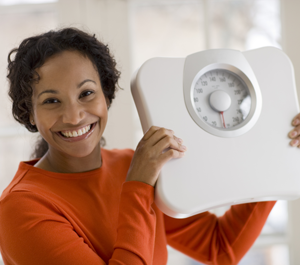Hormone Pellet
Help Patients Lose Weight with Hormone Pellet Therapy Training
Weight loss was a 76 billion dollar industry in the United States last year (2022). This comes as no surprise, since the CDC reported in 2018 that almost one-half (49.1%) of adults had tried to lose weight within the last 12 months.
With nearly 50% of adult Americans looking for methods of losing weight, adding an effective treatment modality to your practice for weight management and control is more important than ever. But we’re not talking about jumping on the Ozempic and Wegovy weight loss band wagon. Instead, we are offering a natural, effective, and sustainable weight loss tool.
For many patients, especially as they pass the age of 40, hormone decline is a primary contributor to weight gain. In women during menopause – and in men during andropause – dropping estrogen and testosterone levels respectively can lead not only to weight gain, but undesirable fat distribution (such as increased belly fat), as well as a decline in muscle mass.
In this article the SottoPelle Method hormone pellet therapy training experts explain how offering bioidentical hormone replacement pellets enables you to help your patients lose unwanted pounds – while also helping you grow your medical practice.
The Hormonal Cause of Weight Gain in Women
As women age, particularly during the transition into perimenopause and menopause, estrogen production undergoes significant changes. This shift in hormone levels can contribute to various changes in the body, including weight gain.
Estrogen production typically begins to decline in women as early as their late 30s or early 40s. The most notable stage in this hormonal transition is perimenopause, which usually occurs a few years before menopause itself.
The decrease in estrogen levels has a cascading effect on various systems within the body, including metabolism. Estrogen has a regulatory impact on metabolism and fat distribution. When estrogen levels decline, it can lead to changes in the way the body stores and processes fat.
Specifically, lower estrogen levels are associated with a shift in fat distribution from the hips and thighs to the abdominal area. This change can contribute to an increase in visceral fat, the fat that surrounds internal organs, and is associated with an increased risk of chronic diseases such as heart disease, diabetes, and metabolic syndrome.
Additionally, estrogen is responsible for helping the body break down fat. So, with decreased estrogen levels during menopause comes even further fat accumulation – which often results in unwanted weight gain. This is compounded by the fact that if estrogen and testosterone levels get out of balance, too many male hormones (“androgens”) can also increase a woman’s risk of obesity.
Furthermore, the decline in estrogen levels can also affect insulin sensitivity and the body’s response to glucose, potentially leading to an increased likelihood of weight gain. Additionally, reduced estrogen levels might influence appetite regulation and lead to an increase in hunger and cravings, further contributing to weight gain.
The Hormonal Cause of Weight Gain in Men
Testosterone, a crucial hormone in men, plays a significant role in various aspects of health, including muscle mass maintenance, bone density, energy levels, and even the regulation of body fat. As men age, particularly around middle age, testosterone production gradually begins to decline, and this can have implications for weight gain and overall health.
Testosterone production typically peaks during late adolescence and early adulthood, contributing to the development of male physical characteristics and supporting various physiological functions. However, starting around the age of 30, many men experience a gradual decline in testosterone levels. This phenomenon is sometimes referred to as “andropause” or “male menopause.”
The decline in testosterone levels can have several effects on the body, including changes in body composition. Testosterone plays a crucial role in maintaining muscle mass and promoting the development of lean body tissue. As testosterone levels decrease, men may experience a decrease in muscle mass and an increase in body fat, particularly visceral fat—the fat that accumulates around internal organs. This shift in body composition can lead to weight gain, especially in the abdominal area.
Additionally, lower testosterone levels can influence metabolism and insulin sensitivity. Reduced testosterone levels may lead to decreased muscle activity, which can affect the body’s ability to burn calories efficiently. Moreover, testosterone has a role in insulin sensitivity, and lower levels can contribute to insulin resistance, potentially leading to weight gain and an increased risk of type 2 diabetes.
Further, to make matters worse, levels of the hormone leptin – which tell the brain to feel “full” after eating – also drop after menopause. So, following menopause women actually do feel hungrier, which can lead to a need to eat more in order to feel “full.”
How Hormone Pellet Therapy Can Help Weight Loss
For many men and women, as they get older, diet and exercise are simply not enough to counteract the effects of hormone decline and are ineffective at banishing unwanted fat – especially in the belly.
It just “makes sense” that since hormone imbalance is one of the main reasons for weight gain and fat accumulation after menopause and andropause, a truly effective weight management program also needs to include balancing and/or replacing the patient’s missing hormones.
The good news is that SottoPelle Method hormone pellet therapy training enables physicians to offer a 100% natural, safe, and effective method of rebalancing hormones and assisting with sustainable weight loss. And, unlike one-size-fits all pharmaceutical hormone replacement, SottoPelle Method bioidentical hormone pellet therapy is customized for each patient’s specific, individual hormone levels and deficiencies.
Thorough and comprehensive blood testing is conducted to identify each patient’s unique hormone levels so that the hormone pellet therapy can be custom formulated and compounded in the doses that are needed to restore the individual hormone levels to perfect balance.
Why Hormone Pellet Therapy is Superior for Weight Loss
In addition to being custom formulated for each patient, SottoPelle Method hormone pellet therapy offers many other distinct advantages for supporting weight loss in men and women. Unlike synthetic hormones, SottoPelle Method uses hormone replacement pellets that are “bioidentical” – meaning that they are 100% naturally derived and virtually identical in molecular structure to human hormones. So, the human body will recognize and utilize them more effectively than lab created hormones.
Additionally, the SottoPelle Method delivers hormones through tiny, time-released hormone pellets that are inserted under the skin in a quick office procedure. While hormone pills, creams and shots deliver hormones unevenly – creating a roller coaster effect – pellets constantly and consistently release hormones when the body needs them … just like the ovaries and testicles once did when the patient was younger.
Weight loss by naturally balancing hormones avoids many of the side effects and dangers of harsh weight loss medications – such as Ozempic, Wegovy, and weight loss amphetamines and stimulants. SottoPelle Method hormone pellet therapy training teaches doctors to restore the patient’s body to a natural, health state – without artificially suppressing appetite, which can lead to nausea, weakness, dietary deficiencies, agitation and more.
The absence of harsh side effects also makes weight loss that results from hormone rebalancing sustainable.
Physician Hormone Pellet Therapy Training
Once your patient passes 40, for a weight loss program to be fully personalized, integrative, and truly effective a man or woman’s hormone levels and imbalances need to be taken into consideration.
SottoPelle Method hormone pellet therapy can help return a man or woman’s metabolism to what it was when they were younger and they could more easily burn calories, metabolize fat, manage insulin levels, build muscle, and more. Bioidentical hormone therapy can also increase energy and reduce fatigue, enabling individuals to be as active as they once were – so that they are able to naturally lose weight.
SottoPelle Method is the world leader in physician hormone pellet therapy training. We have helped thousands of doctors learn to dose and administer hormone pellet therapy to restore their patients’ quality of life, including losing the unwanted weight gain that often comes with age, through hormone replacement.
If you would like to add a safe, natural, effective, and sustainable weight loss protocol to your practice, enroll in SottoPelle Method hormone pellet therapy training today. Not only will you have an important tool in your arsenal to improve patient health – but you will also be able to take advantage of the $76 billion dollars that American’s spend on weight loss every year!
The SottoPelle Method Physician Hormone Therapy Training program helps physicians nationwide treat their patients. With hormone replacement therapy on a physician’s list of clinical offerings, patients can experience optimal wellness. Call us today to sign up!
Physician Hormone Therapy Training: 323.986.5100 (press 1)
IMPORTANT DISCLAIMER: This article is provided as general information only and is not intended to be used as medical advice. While the benefits of hormone replacement are well documented through clinical research, we are not representing that hormone therapy is a “cure” for any disease. Only your treating physician can determine if hormone replacement may be a beneficial part of your healthcare regimen, based on your age, overall health, risk factors, and lifestyle.


